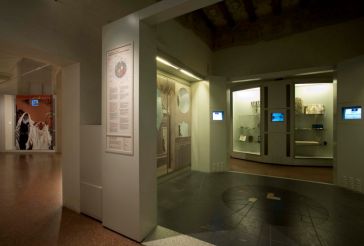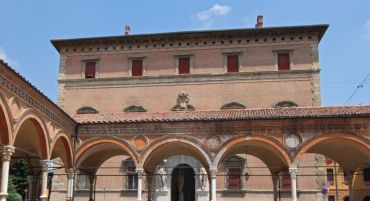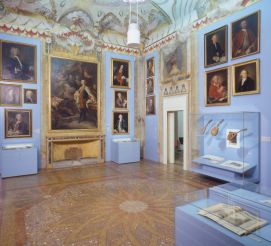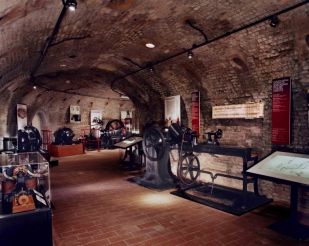Jewish Museum, Bologna

The Jewish Museum (Museo Ebraico) introduces visitors to Jewish cultural heritage in Bologna and Emilia-Romagna region. The central theme of the museum is Jewish identity and its development through time. Its goal is to preserve, study and strengthen the rich Jewish cultural heritage deeply rooted in the province.
History of the museum
The museum is housed in the ancient Palazzo Pannolini, built in the late 16th century by the wealthy merchant Francesco Pannolini. In 1596, he gave up the palazzo in order to establish a school for poor children inside it which became a college in 1619. The latter was closed by Pope Benedict XIV in 1765. The Academy of Sciences was housed here later, and in the 19th century, the palace was bought by Count Malvasia. He then merged the palazzo and neighboring estate into one.
The Jewish community itself lived in Bologna from the 14th century. Since 1556, the Jews were placed by the Pope in the ghetto. After that, Jewish people were banished from the city and welcomed back many times. The Jews faced particularly severe repressions during the reign of the fascists and World War II. Having lived through all sorts of painful experience, including the Holocaust, the Jewish community opened a museum on the border of the former ghetto in 1999. It is managed by a special fund together with the municipality of Bologna.
Museum’s exhibition
Today the museum is considered to be a modern interactive space, the permanent exposition of which is filled with multimedia tools and exhibition devices that allow guests to trace the historical path of the Jewish community in detail. It is also a cultural center that promotes the study of the rich and unique Jewish architectural, artistic and informational heritage. The museum itself takes up an area of 800 square meters. The building is divided into 3 sections:
- Permanent exhibition. This part is devoted to the problem of Jewish identity and introduces the key events in Jewish history that happened during last 4000 years throughout which every generation maintains a connection to each other this way providing a continuity between ancient and modern history. Accordingly, it is perfectly possible to trace the link between ancient and modern Judaism.
- Temporary activities. The museum organized various workshops, courses, conferences, meetings, book presentations, concerts and excursions in this section – all these activities are related to Jewish culture and heritage.
- Documentation Center. It houses a specialized library (over 2,000 volumes) and a cultural center that is connected to important museums, universities, libraries, and research centers not only in Italy but also in Europe, Israel, and the USA.
The museum also offers tours outside of it. Such tours include a trip through the former Jewish ghetto, a modern functioning synagogue, a Jewish cemetery, the Medieval Museum with 16th-century tombstones, and houses where the Jewish people lived before the creation of the ghetto.
How to get
The museum is located in the center of Bologna, in the northeastern part of the former ghetto, on Via Valdonica, 1/5. The Two Towers, as well as the Astronomical Observatory and the International Museum and Library of Music, can be all found nearby. The closest bus stop is 300 meters away – it’s called Teatro Comunale (routes C, T2).
Opening hours: Sunday to Thursday from 10:00 to 18:00, Friday from 10:00 to 16:00. The ticket office closes 45 minutes earlier. Closed on Saturday and Jewish holidays. Contact number: (+39) 051 2911280.
Admission: a full ticket for visiting the permanent collection costs 4 euros, reduced one (visitors aged 18–25 and over 65 years) – 2 euros. Temporary exhibitions are free. The information about admission and opening hours may be changed.





